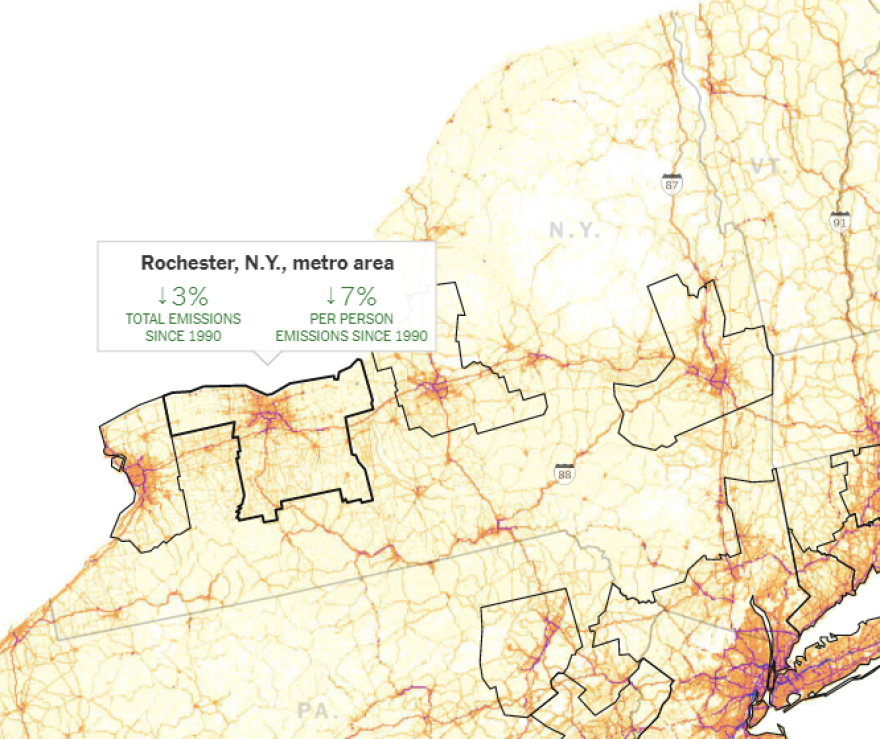Rochester is one of two areas nationwide where measurements of carbon dioxide emissions from cars decreased over the last few decades, according to a New York Times report.
The report drew on data from Boston University and the Oak Ridge National Laboratory that looked at the top 100 metro areas for carbon dioxide emissions from traffic since 1990. Of those, only Rochester and San Jose, California, showed decreases in both total carbon dioxide emissions and carbon dioxide emissions per person.
Arian Horbovetz, who writes about urbanism and transit in upstate New York, said there’s not a clear reason why Rochester would be so different from other cities. He said it’s especially strange that Rochester is so different from other upstate metro areas in the report, like Syracuse and Buffalo.
“To say it’s puzzling is putting it mildly,” Horbovetz said. “I would say that finding a potential answer to this is most definitely worth some investigation.”
Martin Schooping, a program manager in RIT’s Golisano Institute for Sustainability, said no immediate comprehensive explanation came to mind for him, either.
One possibility might be that people in the Rochester area are using newer cars and trucks that run cleaner than older models, and visible charging stations for electric vehicles might be encouraging their use, Schooping said, but he cautioned that he did not have data at hand for those points.
Schooping also said that Rochester traffic is less of a problem than in many other cities.
“You know, and I sit in it too sometimes, and, yeah, I’ll grumble about the Rochester traffic, but then I go to New York or Chicago or Dallas, and I have to drive around there, and then I come home and say, ‘Oh, yeah, this really isn’t bad,’ ” he said.
Smoother traffic means less idling and higher average speeds, which increases fuel efficiency — until speeds get excessive, said Schooping.
Whatever the explanation, Horbovetz and Schooping both said local governments should invest in figuring it out.
“I think we need to find the root of it, because I think if we can tell that story here, there’s some data to be shared with other cities,” Horbovetz said.


